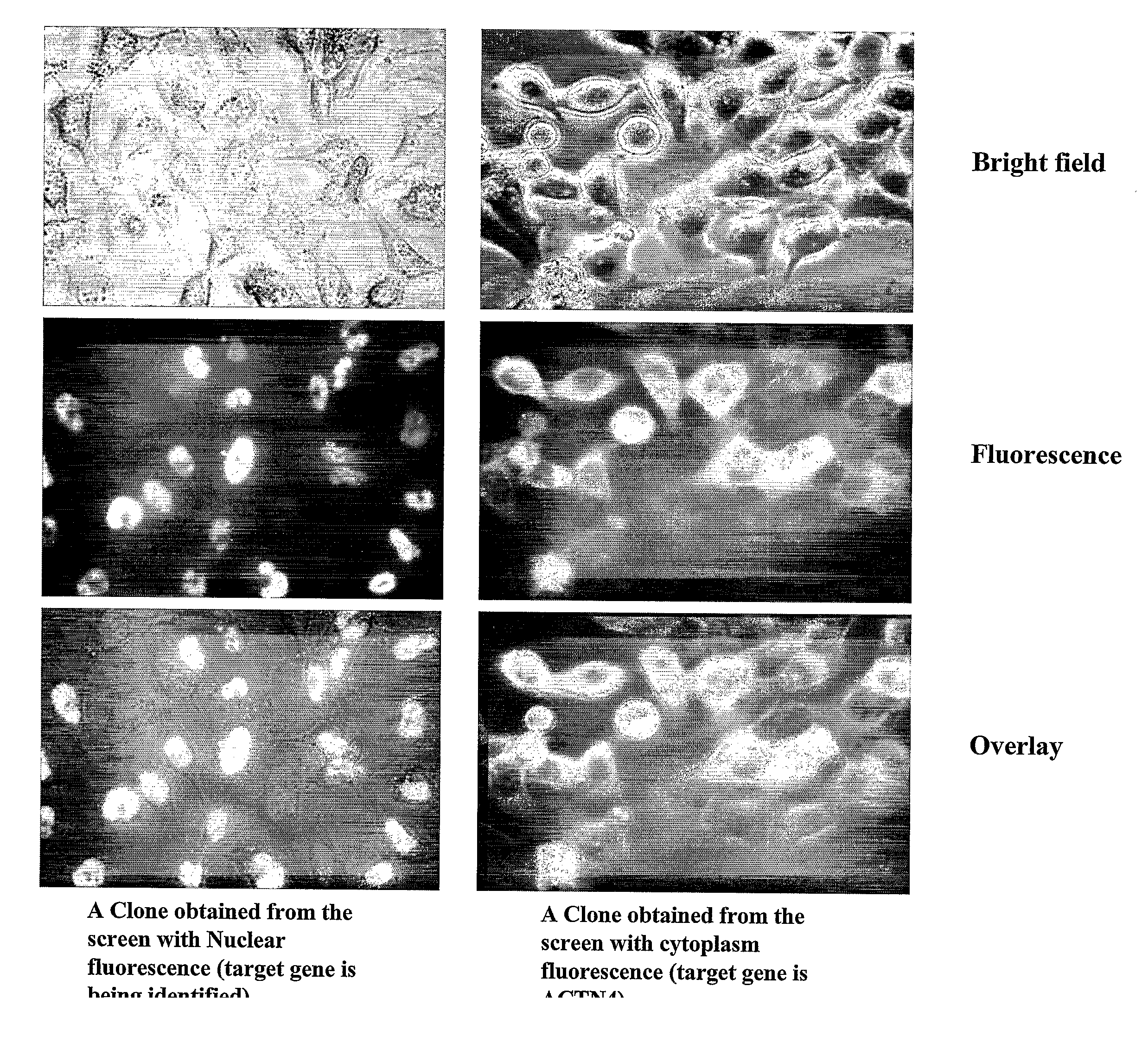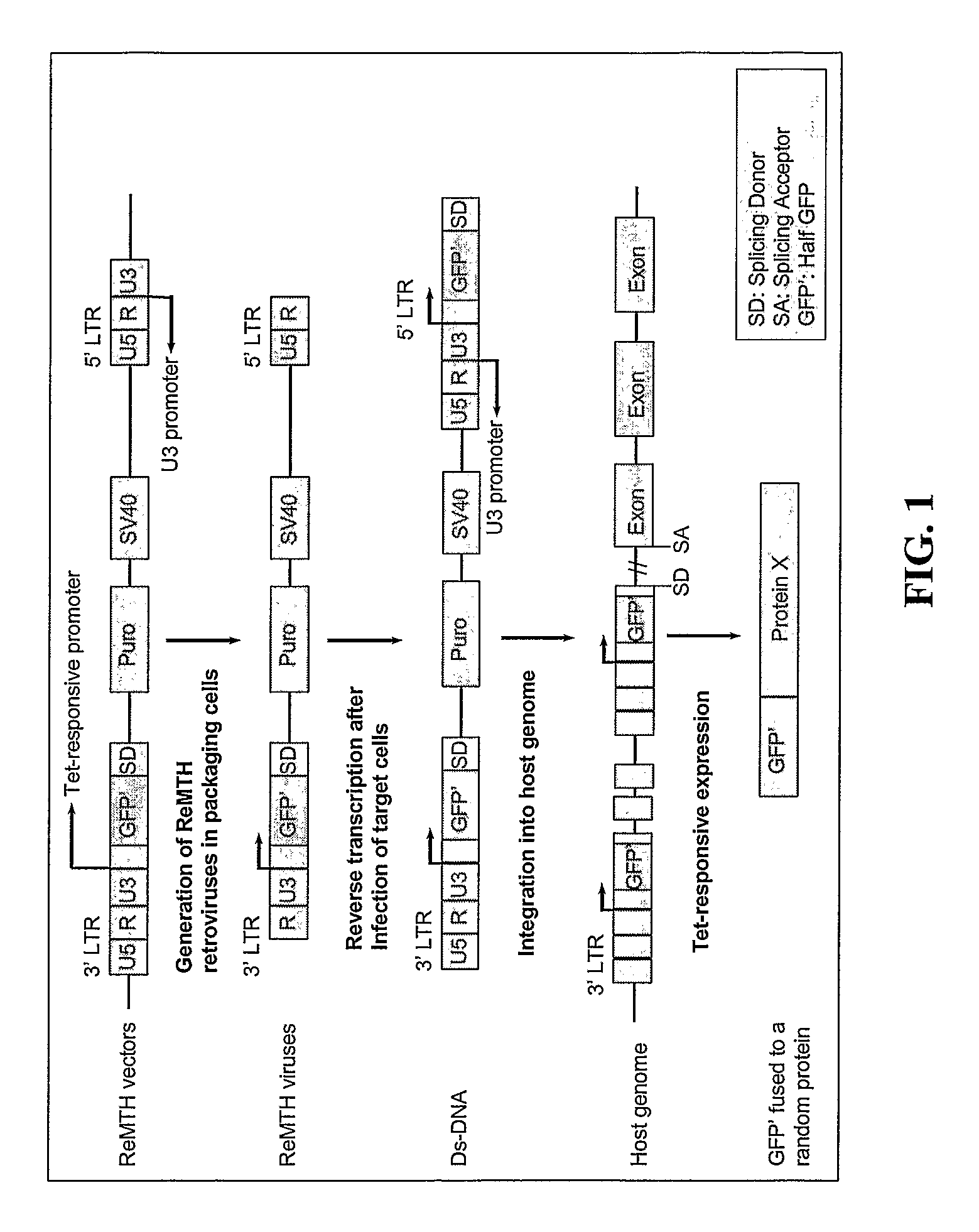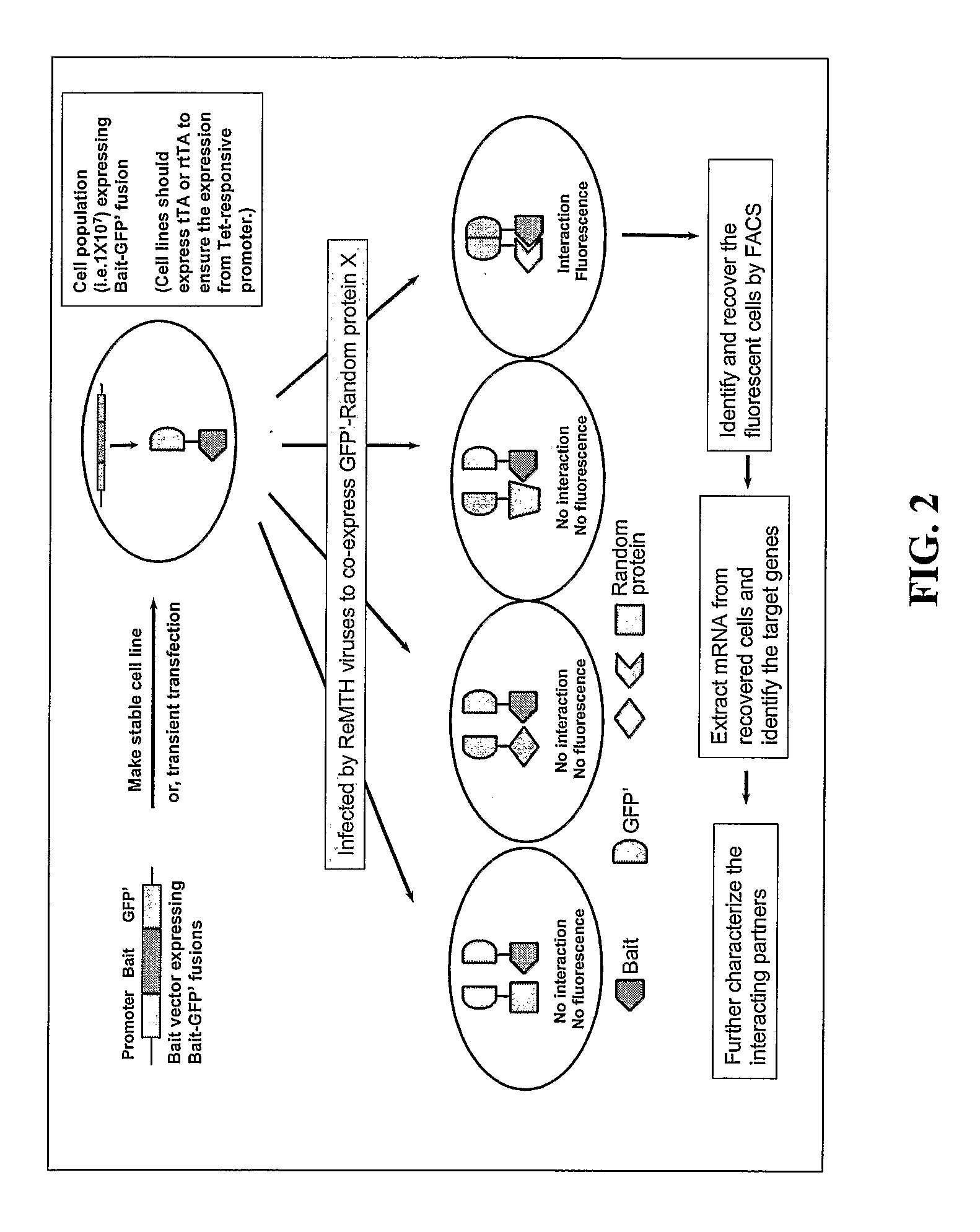Methods and compositions related to identifying protein-protein interactions
a protein and interaction technology, applied in the field of molecular biology, biochemistry, cell biology, cancer research, and proteomics, can solve the problems of inability to distinguish induced versus constitutive interactions, few convenient methods for studying proteins,
- Summary
- Abstract
- Description
- Claims
- Application Information
AI Technical Summary
Benefits of technology
Problems solved by technology
Method used
Image
Examples
example 1
ReMTH Experimental Procedures
Material and Methods
[0174]Cell Lines and Plasmids. HeLa Tet-Off and HeLa Tet-On may be purchased from BD Clontech. Packaging cells lines, PT67 and Phoenix (ampho) may be purchased from BD Clontech and Orbigen, respectively. Cells are grown in DMEM supplemented with 10% fetal calf serum. GFP vectors (pEGFP-C1 and pEGFP-N3) are purchased from BD Clontech. The enhanced retroviral mutagen ERM vectors (Liu et al., 2000) were gifts from Dr. Songyang, Department of Biochemistry and Molecular Biology, Baylor College of Medicine, Houston, Tex. There are three ERM vectors, RF1, RF2, and RF3, representing three different reading frames. Six ReMTH vectors are constructed by inserting gene fragments coding for fragments of GFP into above ERM vectors. ReMTH vectors, RF1N, RF2N and RF3N, contain GFP gene amino (N) terminal fragment and generate amino half GFP fused to a random endogenous protein, while RF1C, RF2C and RF3C contain GFP gene carboxy (C) terminal fragment ...
example 2
ReMTH Screen in Mammalian Cells Reveals Novel Interaction Partners of PKBA / AKT1
Methods and Methods
[0180]Cell lines and plasmids. HeLa Tet-on cell line was purchased from BD Clontech (Palo Alto, Calif.). 293T / 17 cell line was from ATCC (Manassas, Va.). Cells were grown in Dulbecco's modified eagle's medium supplemented with 10% fetal calf serum and antibiotics. Plasmids VYF102 (IFP-F[2] vector), 11117-Y101 (expressing IFP-F[1]-AKT1), and 21622-Y108 (expressing PDK1-IFP-F[2]) were gifts from Odyssey Thera. Inc. (San Ramon, Calif.). The retroviral vector, ERM-R11 was a gift from Dr. Z. Songyang (Baylor College of Medicine, Houston, Tex.). Plasmids pcGP and pVSVG were gifts from Dr. Xiao-Feng Qin (M.D. Anderson Cancer Center). IFP-F[2] was amplified by polymerase chain reaction (PCR) from 21622-Y108 with 5′ primer CTTAATTAAGCCACCATGGGTAAGAACGGCATCAAGGCGAAC (SEQ ID NO:2) and 3′ primer TGGCGCGCCGCTTGTACAGCTCGTCCATGCCGAGAG (SEQ ID NO:3). A ReMTH vector, ReMTH-IFP-F[2]1, was constructed by ...
PUM
| Property | Measurement | Unit |
|---|---|---|
| wavelengths | aaaaa | aaaaa |
| wavelengths | aaaaa | aaaaa |
| pH | aaaaa | aaaaa |
Abstract
Description
Claims
Application Information
 Login to View More
Login to View More - R&D
- Intellectual Property
- Life Sciences
- Materials
- Tech Scout
- Unparalleled Data Quality
- Higher Quality Content
- 60% Fewer Hallucinations
Browse by: Latest US Patents, China's latest patents, Technical Efficacy Thesaurus, Application Domain, Technology Topic, Popular Technical Reports.
© 2025 PatSnap. All rights reserved.Legal|Privacy policy|Modern Slavery Act Transparency Statement|Sitemap|About US| Contact US: help@patsnap.com



